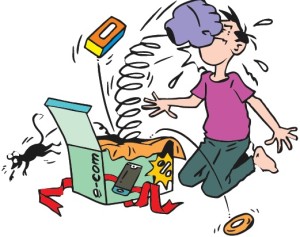October-19: Cover Story
- Posted by CERC India
- Posted in October-2019
How to avoid buying fake products online
The festive season brings a deluge of sale, not just in the brick and mortar stores but also on all online portals. “Big Diwali Saleâ€, “Big Billion Saleâ€, “Freedom Sale†are flashed all around to lure to buy products online. There is only one major issue while buying online – risk of getting fake/counterfeit product.
Counterfeit products are not just harmful for the company that they are imitating but also dangerous for the consumers. Many counterfeit products are low-quality and can cause injuries. Moreover, you will not get any guarantee or warrantee on such products. Counterfeit of cosmetics and skin care products can pose a danger to the health of the users.
We bring to you some tips and tricks to follow, to avoid buying counterfeit products online.
Nutshell
- Read all the reviews for the product and also check for the rating of the seller
- Read the return and refund policies carefully before purchasing the products.
How to avoid buying fake
- Check the identity of the seller: When you are buying from shopping websites, always do a research on the seller. Check for their rating and the reviews that the seller has got. Is there any negative feedback for the seller and if so what are they talking about? Also, has the seller responded to the feedback or questions asked?
- Check the review of the product: Not just the seller, but also check reviews for the particular product that you are planning to purchase. Read the reviews on the portals carefully to see if they reveal something about the quality of the product. An excessively positive or a vague review may not necessarily mean that the product is actually good. It may be a fake review.
- Be wary of heavy discounts: Nothing comes for free. You may be tempted to buy that much desired branded product which is available at rock bottom price, but do so with abundant caution. Do not hesitate to compare prices on several websites, and always take the total price into account i.e. shipping price, taxes etc. also, check the manufacturer’s website for price and any other information to confirm the authenticity of the product.
- Check the product packaging: The packaging can also scream counterfeit. If the packaging has no manufacturer details, use-by-dates or has some misspellings, it could mean that it is a fake product. Check the website to compare the logo, placement of the details on the packaging.Â
- Check for return and refund policies: When the return and refund policies are clearly defined, you can limit your risk involved in the purchase. It indicates that you will get exactly what is being displayed and if you are not happy, you can get your money back.
Department of Consumer Affairs, GoI, has issued draft e-commerce guidelines for consumer protection on 2 August 2019. The provisions regarding counterfeit product are:
- E-commerce company will have to take back goods which are defective, wrong or spurious and /or not as advertised.
- Refunds will have to be given within 14 days.
- If the company comes to know of any counterfeit product being sold on its portal, it will take down the listing if seller cannot give evidence of its genuineness. It will also have to notify consumers of the same.
What if you end up with a fake productÂ
You did your due diligence, yet ended up with a fake/counterfeit product. Don’t worry. You can still get justice.
- Inform the seller: Write to the seller about your issue and request a return and refund. It can be helpful to include photos. You may opt for a replacement, but even that may turn out to be fake. So be careful.
- Write to the portal: It is important that you inform the portal (Amazon, Snapdeal, Flipkart etc) from where you made the purchase. If the portal gets multiple complaints for a particular seller, they would blacklist them.
- Inform Regulatory Authorities: You may also consider writing to the regulatory authorities like the Drug Controller General of India (DCGI), cyber crime branch etc.
- Social Media: Share your experience on your social media platforms and also on the companies/portals FB page, Twitter handle, Instagram etc. so that more and more people become aware of such cases.
All the stakeholders i.e. the consumers, brands, e-commerce sites and regulators need to be active to fight the menace of counterfeit.
Sources:https://www.consumerreports.org, https://www.businessinsider.com, www.konsumenteuropa.se




